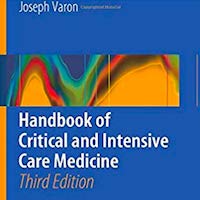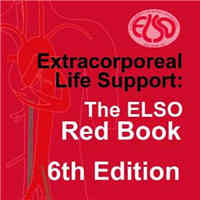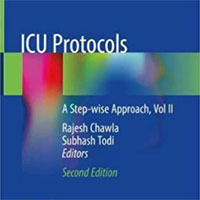Tag: research
Severe Listeriosis in the ICU: Critical Insights from a Multicenter Study
A retrospective multicenter study across 23 French hospitals over 10 years analyzed critically ill ICU patients with culture-confirmed "Listeria monocytogenes" infections. The study aimed to describe patient characteristics,... read more
Biomarkers in Trauma, Injury and Critical Care (Biomarkers in Disease: Methods, Discoveries and Applications)
This handbook systematically presents biomarkers for traumatic injuries. The book covers topics such as traumatic brain injury, liver injury, burn severity, muscle heart damage, and acute inflammation in polytrauma and their... read more
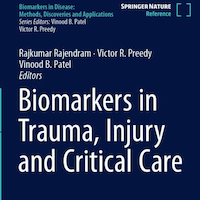
Thirst Management in Orotracheally Intubated and Mechanically Ventilated Patients
Symptom Management Theory (SMT)-based thirst management is an effective strategy. The 5 mL cold water spray method significantly reduces thirst intensity and distress in mechanically ventilated patients under fasting and... read more
Baricitinib Use in Children with Severe COVID-19 Infection
Baricitinib appears safe for both immunocompetent and immunocompromised children hospitalized for severe COVID-19. Most adverse events did not inhibit therapy administration, and there were no deaths following the initiation... read more
Severe Adenoviral Infections: Disease Progression and Poor Prognostic Markers
Low hemoglobin, high serum ferritin, and high LDH in the second week are markers of disease progression and poor prognostic markers in severe adenoviral infections, emphasizing further research and targeted interventions. The... read more
Sepsis: Staging and Potential Future Therapies
Sepsis is a life-threatening organ dysfunction caused by a dysregulated host response to infection. Variability in pathogenesis and complex pathophysiology often delay diagnosis and create significant challenges for clinical... read more
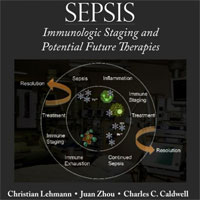
Mortality in Patients with SA-AKI Using the MIMIC-III Database
In this study, we identified critical factors influencing mortality in patients with Sepsis-Induced Acute Kidney Injury (SA-AKI) using the MIMIC-III database. The primary findings of our research, including advanced age,... read more
Endovascular Resuscitation and Trauma Management
This book focuses on endovascular methods for resuscitation and trauma management. Written by highly qualified and clinically active physicians from around the world, it shares information gathered over the past decade,... read more
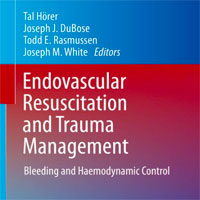
Accurate Percutaneous Tracheal Tube Placement Using Visual-Guided Transillumination Method
The novel Illuminated Tracheal Alignment Guide (iTAG) device and technique is the first of our knowledge to test the identification of tracheostomy sites by way of laser-guided transillumination. We believe this device... read more
ICU-acquired Weakness: Critical Illness Myopathy and Polyneuropathy
Critical illness myopathy (CIM) and critical illness polyneuropathy (CIP) are significant complications in intensive care unit (ICU) patients, first identified in the late 20th century. These conditions often present... read more
Point-of-Care Ultrasound for the Neonatal and Pediatric Intensivist: A Practical Guide on the Use of POCUS
This book, written by internationally renowned experts, is a comprehensive text covering all aspects and recommendations regarding the use of POCUS for critically ill neonates and children. Point of Care Ultrasound (POCUS)... read more
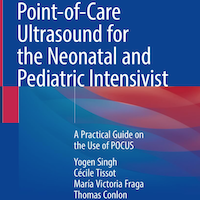
Sepsis: Definitions, Pathophysiology and the Challenge of Bedside Management
A comprehensive and state-of-the-art resource for clinicians who care for patients with sepsis and research scientist alike. Patients with severe sepsis requiring ICU admission have very high rates of ICU and overall... read more
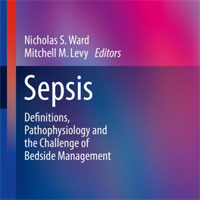
Recent Advances in Severe Sepsis and Septic Shock Management
This review highlights recent advances in the treatment of severe sepsis and septic shock, emphasizing new strategies aimed at improving overall survival and reducing mortality in this patient population. Despite years... read more
Cytokine Storm Syndrome
Cytokine Storm Syndromes, including HLH and MAS, are frequently fatal disorders, particularly if not recognized early and treated during presentation. The genetics of Cytokine Storm Syndromes are being defined with many of... read more
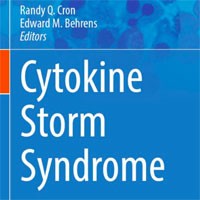
Awareness Strategies and the Physiological Pain Impact in Prehospital Analgesia Management
Developing awareness strategies for prehospital pain management could improve analgesic outcomes, but further research is needed to understand the physiological impact of pain on vital systems. Investigating these dynamics... read more
Patients Under Mechanical Ventilation Are Highly Perceptive
This meta-synthesis provides insights into the perception of intensive care patients under Mechanical Ventilation (MV) who are continuously observing their own lives. This process is complex and involves a highly differentiated... read more
Association Between Aspirin and AKI in Critical Patients with Chest Trauma
This analysis of two datasets reveals that aspirin usage is associated with an increased risk of acute kidney injury (AKI) in critical patients with chest trauma; however, no significant association was observed between the... read more
Evaluation of Vitamin D Supplementation in Critically Ill Patients
Vitamin D supplementation in critically ill patients may shorten ICU or hospital length of stay, improve SOFA scores, or reduce the duration of mechanical ventilation. Its ability to lower 28-day mortality remains uncertain,... read more
The Triglyceride Glucose Index and Delirium Risk in Sepsis Patients
The triglyceride glucose (TyG) index represents a straightforward and efficacious instrument for nursing staff to ascertain the likelihood of delirium in patients with sepsis during the routine monitoring of their condition.... read more
Handbook of Lung Targeted Drug Delivery Systems: Recent Trends and Clinical Evidences
Handbook of Lung Targeted Drug Delivery Systems: Recent Trends and Clinical Evidences covers every aspect of the drug delivery to lungs, the physiology and pharmacology of the lung, modelling for lung delivery, drug devices... read more

AKI and Mortality Predictors of Systemic Autoimmune Diseases and COVID-19
The present study highlights renal parameters and outcomes associated with various systemic autoimmune diseases and COVID-19. Patients who presented with low oxygen saturation (... read more
CAR-T Therapy – Critical Care Considerations of Chimeric Antigen Receptor
Despite significantly improving the treatment of blood cancers, CAR T-cell therapy still faces significant hurdles due to its complex and varied toxicities, which require ongoing research to optimize management; while understanding... read more




